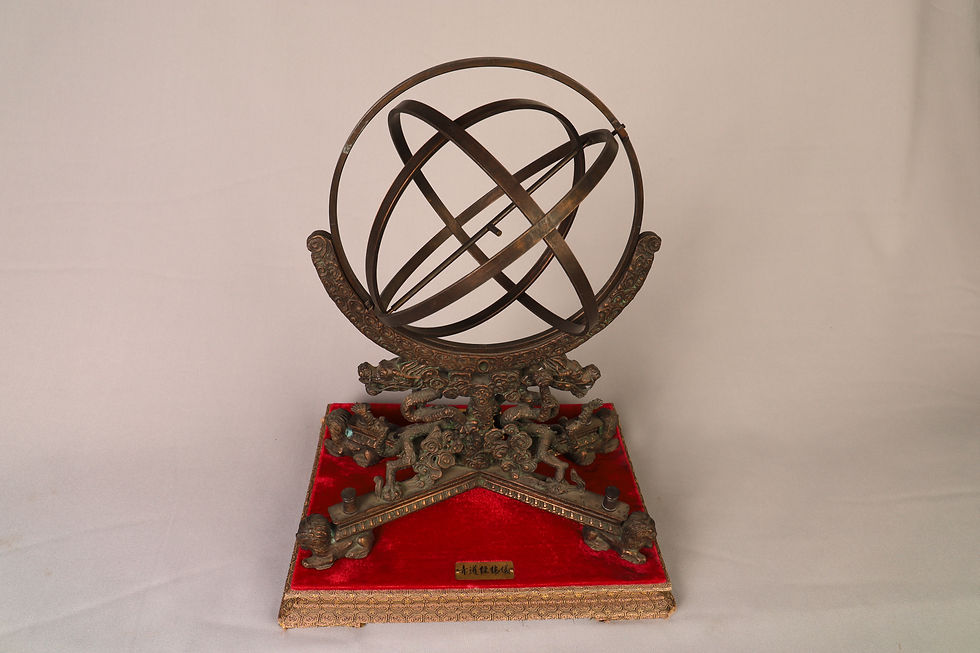Department:
The Museum Proper
Replica or Original:
Replica
On Display, In Storage, or in a Private Offsite Collection:
On Display
Primary Material:
Metal
Medium:
Tool
Dimensions:
15" x 12" x 8.5"
Classification/Category:
Tools & Equipment for Science & Technology
Specific Classification:
Astrology Tool
Notable Signatures,
Inscriptions, and/or Markings:
Donated by:
Unknown
Accession Number
1993.018.001
Artifact Date:
1000 B.C. - A.D.
Han Dynasty (206 BC-220 AD)
Artifact Era/Dynasty:
Unknown
Creator:
Chinese
Creator Ancestry:

The Armillary Sphere was created by Luoxia Hong during during the Western Han Dynasty (206 BC-220 AD).
The first celestial globe was built during the First Century BC, thus the design continuously improved until it reached its final form in the Song Dynasty around 1,000 years later. Armillaries utilize converging protractor rings, dividing the globe, and allow an astronomer to track celestial movement and corresponding calendar information. Armillary Spheres could measure the coordinates of the "fixed" stars and measure the courses of the sun, stars, moon and planets. However, due to the sphere's interlocking rings, it was difficult to map the entire sky. Life sized armillaries stand about 2 meters high.

Artifact Date:
1000 B.C. - A.D.
Artifact Era/Dynasty:
Han Dynasty (206 BC-220 AD)
Creator:
Unknown
Creator Ancestory:
Chinese
Catalogue Entry
Online References:
Department:
The Museum Proper
On Display, In Storage, or in a Private Offsite Collection:
On Display
Replica or Original:
Replica
An astronomical instrument used to track the movement of celestial bodies in the sky.
一種用於追踪天體在天空中的動態的天文儀器。
Listen
Classification/Category:
Tools & Equipment for Science & Technology
Specific Classification:
Astrology Tool
Notable Signatures,
Inscriptions, and/or Markings:



